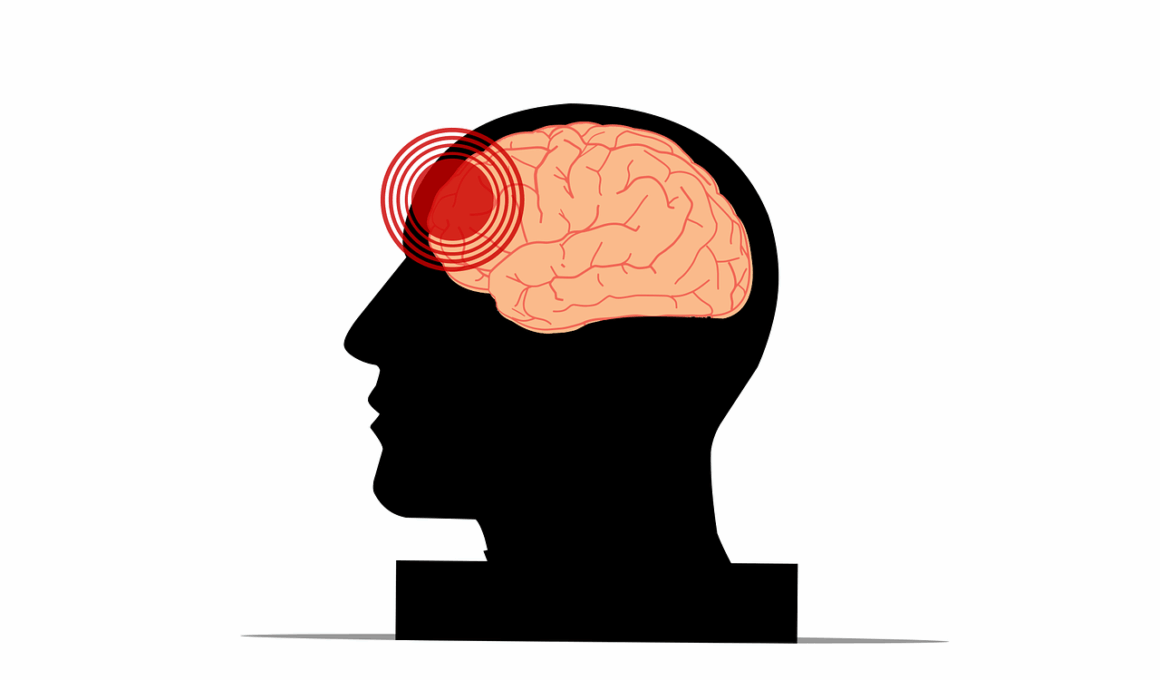Top 10 Signs and Symptoms of a Concussion
A concussion is a type of traumatic brain injury, often caused by a blow to the head, resulting in various symptoms. Recognizing these symptoms is crucial for prompt management and rehabilitation. One of the primary signs of a concussion is headache. This can range from mild to severe, often intensifying if left untreated. Another common symptom is confusion or difficulty concentrating. This mental fogginess can impede daily activities, making it essential to rest. Dizziness or balance issues frequently occur as well. Individuals may feel as though they are spinning or have trouble maintaining steady footing. Nausea and vomiting can manifest shortly after the injury occurs and may persist. Sensitivity to light and noise is also prevalent, where bright lights or loud sounds can exacerbate discomfort.
Fatigue is common following a concussion, impacting one’s overall energy levels and motivation. Sleep disturbances can further complicate recovery, with some experiencing insomnia or excessive drowsiness. Emotional symptoms, such as irritability or mood swings, should not be overlooked. Changes in personality can surface post-injury, potentially affecting relationships. Memory problems are another key indicator. Individuals may struggle to recall the events leading up to and immediately following the concussion. This amnesia highlights the injury’s impact on cognitive functions. For effective recovery, medical advice is recommended. If symptoms persist or worsen, seeking professional assessment is vital. Early intervention aids rehabilitation efforts and minimizes long-term consequences. Understanding the signs helps promote awareness. Recognizing these effects ensures timely care to mitigate health risks.
Understanding Concussions
Concussions are often misunderstood, leading to inadequate treatment in many cases. The brain is incredibly vulnerable; even a minor impact can have elongated repercussions. Therefore, always observe patients closely following suspected head injuries. The impact can be immediate, but symptoms might also present hours or days post-injury. Right after the event, ensure that the injured parties are provided a quiet space to recover. Symptoms may fluctuate, making it critical to monitor any behavioral changes. Encourage consistent communication with medical professionals to track recovery progress. If someone feels worsening symptoms, they should return to the doctor. Using resources such as informative websites can be beneficial. Reading up on current guidelines surrounding concussions helps provide essential knowledge. Gradually returning to physical activity is crucial; a stepwise approach is often effective. Familiarize yourself with recommended criteria for safely resuming sports and activities. Engaging in education about head injuries serves both preventative and recovery purposes; it empowers individuals and communities. Awareness can lead to better practices and a culture of safety, minimizing risks associated with concussions during sports and physical activities.
When addressing concussion symptoms, it’s vital to remain cautious and patient. Rushing the recovery process can lead to prolonged challenges and setbacks. Physicians recommend gradual reintroduction into work or sports goals to ensure safety. Engaging with physical therapists can enhance recovery outcomes, particularly concerning balance and coordination. They provide indispensable guidance on exercises tailored to individual recovery stages. Each concussion is unique due to variances in personal health backgrounds and previous injury histories. Thus, care plans must be personalized. Students involved in school sports should communicate openly with coaches about their recovery needs. Advocating for one’s well-being fosters a supportive environment. Teaching athletes about reporting symptoms can create awareness and facilitate early intervention. Additionally, incorporating education around concussions into sports programs can promote long-term safety. Schools and sports organizations should implement policies outlining specific concussion protocols to follow. By doing so, they can ensure a structured response to suspected injuries. This systematic approach helps protect athletes and instills a greater understanding of head injury prevention measures.
Signs to Look Out For
Identifying potential concussion signs can greatly influence recovery strategies. First, look for physical symptoms such as severe headaches and dizziness. Observing an individual’s behavior also holds significant importance; someone might appear dazed or confused. Additionally, monitor their emotional well-being. Mood swings, depression, or increased irritability could indicate underlying issues stemming from a concussion. Pay attention to difficulty sleeping; changes in usual sleeping patterns may occur. Moreover, experiencing sensitivity to light or noise should not be underestimated. Even seemingly minor reactions can illustrate significant impact. Many people report experiencing changes in taste or smell after concussions, although less common. Encourage open dialogues with friends and family about physical and emotional changes during the recovery period, as support plays a tremendous role in healing. Each sign should be documented clearly to collect information for medical evaluations. Keeping track can help uncover patterns, leading to timely intervention. Furthermore, raising awareness surrounding these concussion signs can promote a proactive approach among friends, family, and sports communities regarding the importance of safety.
As we navigate the complexities of concussion management, our approach must include preventative strategies. Proper education about head injuries among athletes, coaches, and families will foster safer practices. Encourage the use of protective gear, such as helmets in contact sports, to lower risk factors. Furthermore, promoting awareness about the importance of recognizing symptoms is essential. Awareness campaigns can enhance understanding and help de-stigmatize seeking medical care post-injury. Active participation in educational programs leads to a healthier sporting environment overall. Speak openly about brain health during team meetings and practices to build resilience in injury prevention. Instilling a strong culture around health and safety elevates the importance of adhering to concussion protocols. Understanding that head injuries are not to be taken lightly will empower individuals to prioritize their health. Always advocate for athlete wellness by maintaining updated training methods and injury prevention protocols. Through shared knowledge, the community can work together towards reducing concussion incidence rates.
Conclusion on Concussion Awareness
In conclusion, being aware of the top signs and symptoms of a concussion plays a vital role in ensuring quicker recovery. Immediate recognition allows timely intervention and enhanced medical support. Each individual recovering from a concussion has unique needs, and their requirements may change throughout recovery. Consulting medical professionals enables personalized care, tailored to specific challenges faced during the rehabilitation process. Communities must work hand-in-hand to prioritize educational initiatives, raising awareness of concussions and their effects. Striving for a culture where athletes confidently speak out about their health will promote better outcomes. Injury prevention will ultimately develop through ongoing conversation and respect for individual health needs. Implementing systematic procedures ensures that everyone understands the importance of safety when participating in physical activities. Adopting these practices can significantly improve the quality of life for individuals facing concussion-related challenges. Continue spreading awareness regarding symptoms and treatments as it will help create a positive change in the approach towards managing concussions going forward. Knowledge is power, and advocating for safety will pave the way for stronger, healthier communities.
Prioritize open discussions concerning concussion management and prevention strategies, addressing injuries and subsequent treatments will foster a safer environment for everyone involved in physical activities. Educational resources also contribute to this process by disseminating vital information. When in a community that values awareness, all can leverage understanding to cultivate better health practices. Encourage fellow coaches and parents to familiarize themselves with symptoms and remember, reporting honestly can lead to appropriate care. When symptoms arise, encourage immediate medical assessment to obtain the necessary support for recovery. By fostering a community committed to understanding and addressing concussions, we can work together to protect our athletes and loved ones. Engaging in these discussions promotes a culture that values health and safety over competitiveness. Continue to prioritize brain health by recognizing the signs, and don’t hesitate to speak up when concerned. Every small step taken towards increasing awareness around concussions ultimately accumulates to create a larger impact over time. Advocate for athlete safety and recovery by making consolidated efforts to elevate this issue within sports organizations and schools for the betterment of all involved.


